12 Simple Steps To A Zero-Waste Kitchen
To support the running costs of Moral Fibres, this post contains affiliate links. This means Moral Fibres may earn a small commission, at no extra cost to readers, on items purchased through these links.
Cut waste and plastic in your kitchen with these 12 simple steps to a zero-waste kitchen – from cutting food waste to exploring plastic-free food storage, and a whole lot more.
I’ve found that my kitchen is the biggest plastic magnet in my home – more so than the bathroom. Between food packaging, food storage, cleaning supplies, and more, kitchen plastic can feel like a tide that can’t be held back.
It’s good to try and get a grip on it if you can though. According to the United Nations Environment Programme (UNEP) – the leading global environmental authority – we produce about 400 million tonnes of plastic waste every year across the globe.
And of the seven billion tonnes of plastic waste generated globally so far since the 1950s, less than 10% has been recycled. This has led to severe environmental, social, economic and health consequences.
Thankfully, there are a few fairly easy swaps that you can do to help you on your way to make your kitchen a whole lot more zero-waste.
We’ve tried out a whole host of zero-waste, plastic-free and reduced-plastic alternatives in our house over the years. We aren’t entirely plastic-free – it’s still a work in progress (food is the hardest part – we don’t have bulk shops locally). However, we’ve made some big steps, and my hope is you can glean some useful advice from our experience so far.
Achievable Plastic-Free & Zero-Waste Kitchen Swaps To Make

I am all about progress over perfection. This means I’m not for a moment suggesting you throw out all the plastic in your kitchen and replace it with zero-waste alternatives. Instead, the most environmentally friendly way to green your kitchen is to use the plastic items you have, and then when they reach the end of their life, look at replacing them with plastic-free alternatives. Consider it a journey rather than an endpoint to be achieved by next week.
Use the quick links to jump to a specific section or keep scrolling for the full guide:
- Tackle Food Waste
- Compost Your Food Waste
- Phase Out Your Old Tupperware
- Opt For Plastic-Free Tea
- Embrace A Zero-Waste Kitchen Cleaning Routine
- Opt For Plastic-Free Cloths & Scourers
- Ditch The Kitchen Roll
- Ditch The Cling Film
- Buy In Bulk
- Remember Your Reusable Bags
- Grow Your Own Herbs
1. Tackle Food Waste
I always think the best place to start in trying to make your kitchen more zero-waste is to start with one of the biggest issues facing our planet – food waste.
Food waste may not seem like a big deal, but a massive 30% of the food we produce is wasted – about 1.8 billion tonnes a year. So much so, that it has been estimated that if food waste was a country, it would be the third-highest emitter of greenhouse gases after the US and China. If we can collectively get a handle on food waste, we can slash the emissions that drive climate change dramatically.
The other main benefit of reducing our food waste is that it helps save money – something everyone can get behind right now whilst food prices keep rising in 2024.
There are tons of ways to cut your food waste – from meal planning and getting creative in the kitchen, to organising your fridge and cupboards better. Check out all my top tips to reduce your food waste for heaps of easy ideas.
2. Compost Your Food Waste
When food waste goes into your general waste bin, it ends up in landfill. Here it degrades anaerobically (without oxygen), rather than composting aerobically (with oxygen). It might not seem like a big difference, but the environmental impact is huge.
You see, when food degrades anaerobically, it releases methane gas. When food composts aerobically it releases carbon dioxide. Methane is far worse for the environment because it traps more heat in the atmosphere. In fact, it’s 80 times more warming than carbon dioxide – making it a key driver in contributing to climate change.
Composting food waste doesn’t have to be tricky. Your local authority might collect it from the kerbside. If not, or if you want a ready supply of compost for your garden, then you can compost at home. Here’s how to compost at home for beginners, and how to compost in a flat.
3. Phase Out Your Old Tupperware
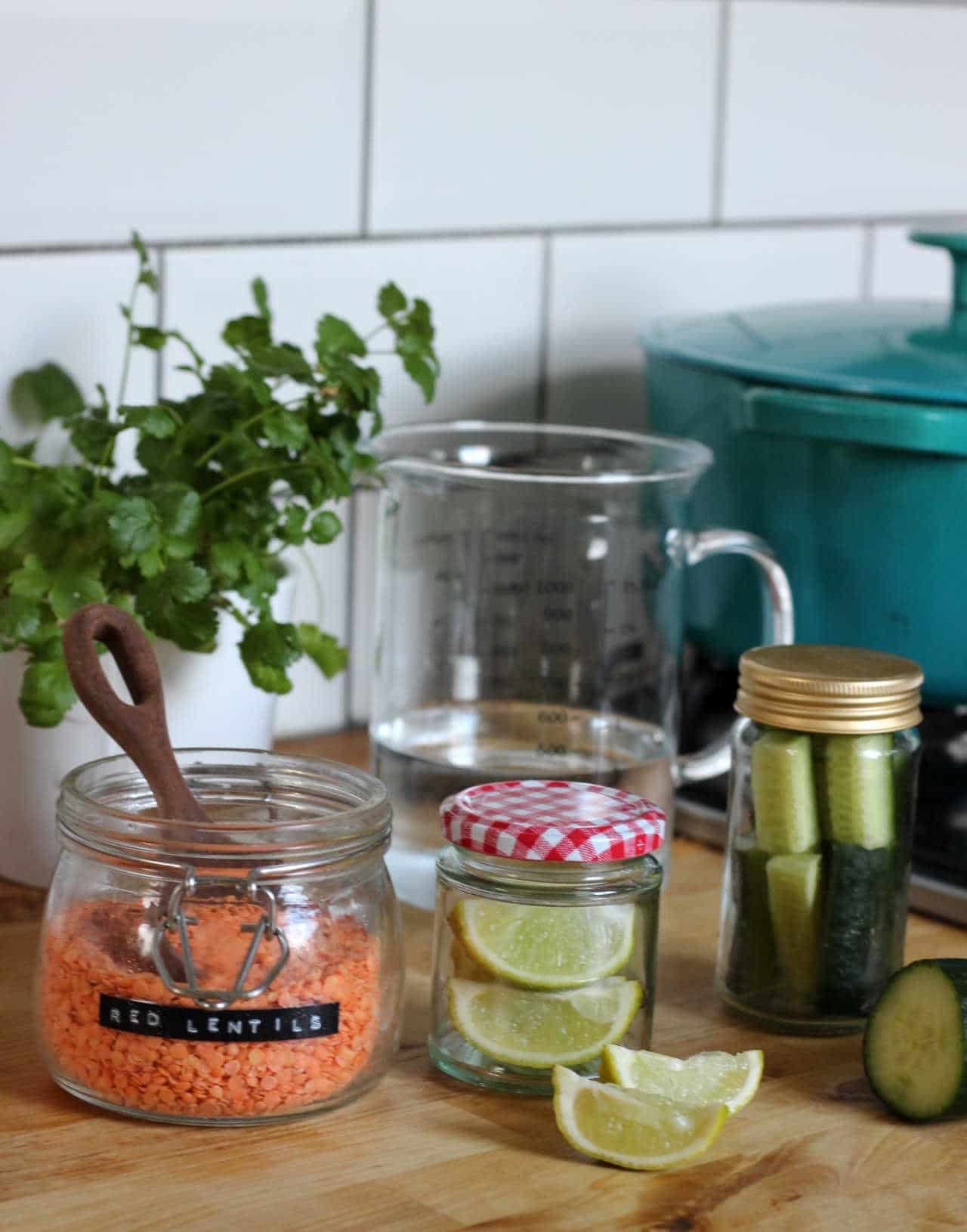
Most of us have some plastic Tupperware in our kitchen cupboards and drawers – possibly tomato-stained like my old tubs! It’s definitely not zero-waste to bin something that’s still useful, even if it is made of plastic.
Instead, I’m continuing to use my old Tupperware tubs for food storage. And as they break, I’ve been replacing them with more sustainable and plastic-free alternatives. These include:
- Glass storage containers – I’m a fan of these glass tubs from John Lewis (from £4). You can store food in the fridge or freezer, and even heat up food in the oven or microwave. I love them – they’re so practical – and don’t suffer from tomato staining!
- Glass jars – For a thrifty alternative, I often store food in glass jars. It costs nothing, plus you can see what’s inside the jar at a glance. This means you’re less likely to find something festering away in a tub at the back of the fridge.
- Silicone freezer bags – I love my silicone freezer bags. I use them for all sorts of food storage – from freezing food to popping lunch in when I’m out and about, to storing chilled or dried food in. I pop them in the dishwasher when they need to be cleaned, and they always come out looking great.
- Metal food storage containers – I have one or two metal food storage containers. They’re not my favourite because you can’t see in them at a glance, and you can’t put them in the microwave. Plus they tend to be quite expensive to buy.
4. Opt For Plastic-Free Tea
We Brits guzzle a whopping 165 million cups of tea every day. If you are partial to a cup of tea, then one easy route to a zero-waste kitchen is to swap to plastic-free teabags.
In case you aren’t aware, some teabags are made from plastic. This inadvertently releases millions of microplastics – tiny particles of plastic – into our soils and waterways with every cup we brew.
Just a few years ago most brands made their teabags from plastic. However, thanks to consumer pressure, lots of brands have been making great progress in switching to plastic-free alternatives. Find out where your preferred tea brand currently sits with my guide to plastic-free teabags.
5. Embrace A Zero-Waste Kitchen Cleaning Routine
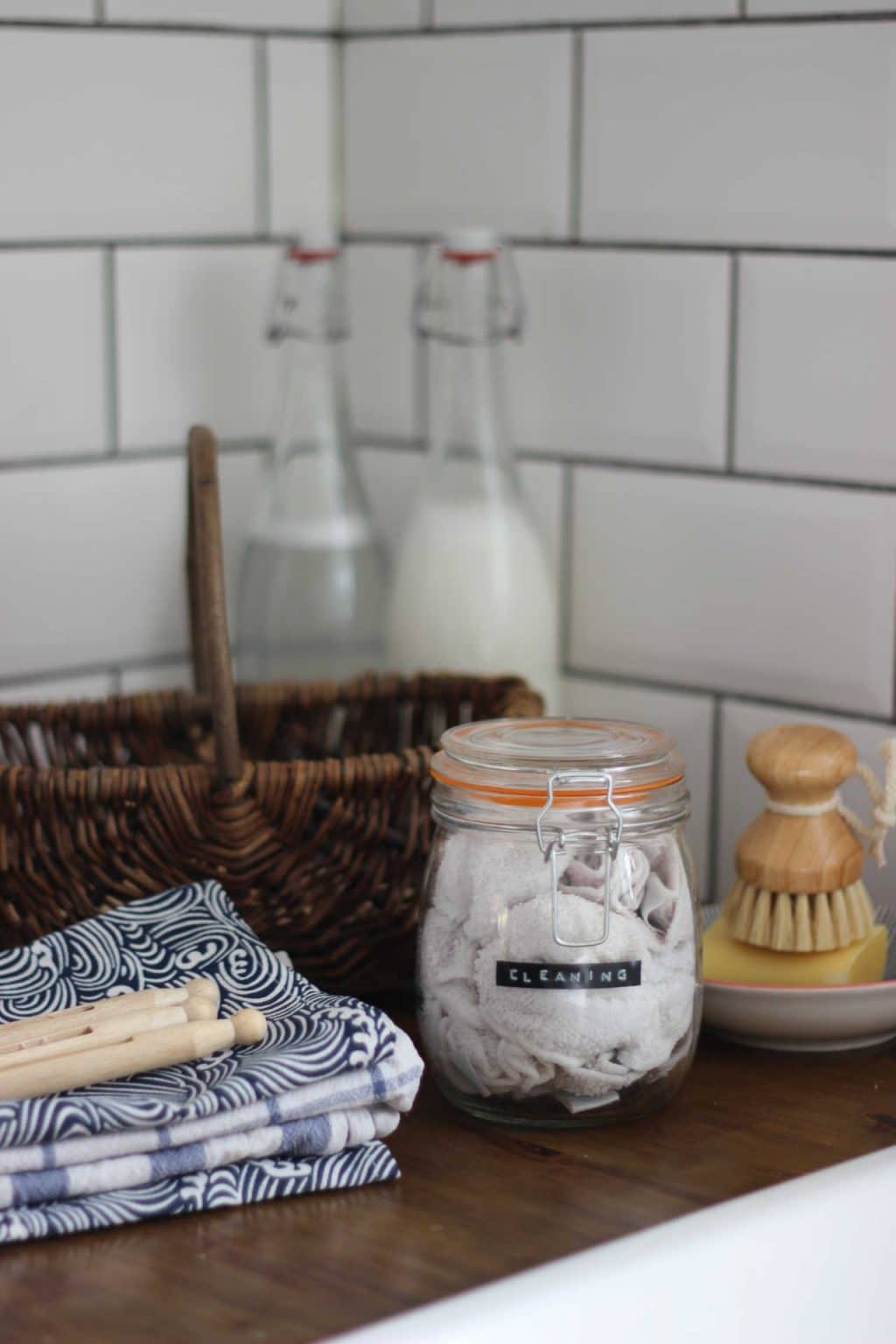
If the cupboard under your kitchen sink is heaving with plastic bottles of cleaning products with unpronounceable ingredients, then worry not. It’s super easy to break out of this cycle.
As you use up what you have, you might want to make your own cleaning products. If you do then I’ve got heaps of my tried and tested natural cleaning recipes for you that make it easy to make your own non-toxic products that work, without all of the plastic waste. I make everything from my own cleaning sprays to cleaning wipes (pictured above), and even my own laundry powder.
If DIYing isn’t for you, don’t worry. There are heaps of zero-waste cleaning solutions out there for the kitchen. This ranges from refillable products to just-add-water cleaning products. It’s never been easier to make a switch to more sustainable alternatives.
6. Opt For Plastic-Free Cloths & Scourers
As you give your cleaning cupboard a sustainable glow-up, you might want to consider replacing your cleaning supplies as they wear out.
After all, many products – from scrubbing brushes to sponges and scourers – are made from plastic, and release microplastics with every wash. This leaves the planet more polluted with every wash. Plus many cleaning tools aren’t recyclable when we’re done with them.
I’ve found lots of zero-waste alternatives:
- Cotton cloths – you can also chop up old clothes to make effective cleaning cloths for a truly waste-free alternative.
- Cellulose cloths – which can be cut up and composted when they are done.
- Compostable sponges
- Washable fabric sponges
- Jute sponges
- Coir scourers
- Loofah scourers
- Copper scourers
- Wooden dish brushes with replaceable heads
The list is almost endless! Some of the best places to pick these up include Seep and Ethical Superstore, and your local zero-waste stores.
7. Ditch The Kitchen Roll
Another easy and sustainable tip is to ditch the kitchen roll. Kitchen roll might be made of paper, rather than plastic, but it isn’t recyclable. And depending on how you’ve used it then it’s not compostable either.
Need some handy pointers? Check out these sustainable alternatives to kitchen roll to help get you started.
8. Ditch The Cling Film
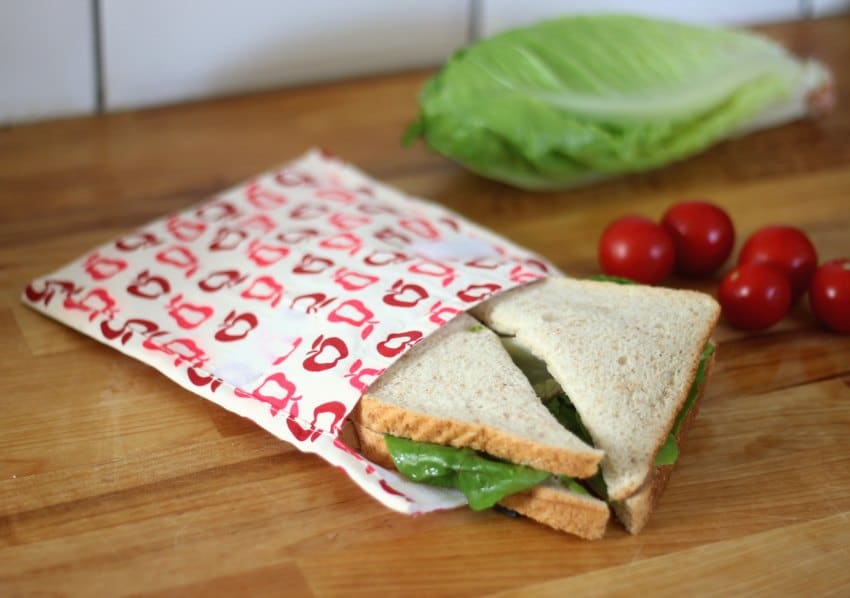
While you’re giving kitchen roll the heave-ho, why not ditch the cling film while you’re at it? There are heaps of eco-friendly cling film alternatives out there – from beeswax wraps and reusable food bags to getting creative with plates. I have never bought cling film – it’s definitely not a must-have!
9. Buy In Bulk
If you are lucky enough to have a zero-waste shop near you, then it’s an easy way to stock up on dried food. From pasta and rice to cereals, flour, spices, coffee, tea, sweet treats, plastic-free snacks, and more – it can be a convenient and affordable way to buy food in the exact quantities you need, without any plastic packaging.
Even some supermarkets – such as Marks & Spencer and Asda – now offer refill stations in certain stores.
It’s easy to get started – simply bring your own bags or containers, and fill them up. Just make sure you know the “tare weight” – the weight of the container when it’s empty – so that it can be deducted from the total weight. A little handy tip to help save you money!
10. Remember Your Reusable Bags
I’ve found that remembering my reusable bags is sometimes a challenge! To help get around this, I’ve found some helpful strategies, that whilst they don’t always work, are helping me cut down on how often I need to reach for a plastic bag:
- I keep a lightweight foldable bag in my handbag. I try to be really firm with myself about folding up and putting it back in my handbag when I put away my shopping!
- I try to keep a stash of bags by my front door and in the boot of my car so that I don’t forget them when I head to the shops. Again, it’s a case of being firm and making sure I put them back when I’m done.
I also have a stash of reusable produce bags, that I like to use instead of the single-use plastic bags for fruits and vegetables. These are lightweight, washable, and perfect for carrying produce without generating unnecessary waste. Again, you need to be strict about putting these back in the right place, otherwise, you might forget to take them to the shops!
11. Grow Your Own Herbs
Most fresh herbs available at the supermarket come in plastic packaging. If you’re looking to make your kitchen more zero-waste then another easy way to do that is to grow your own herbs. You don’t even need a garden – a sunny windowsill is ideal.
Not only does it reduce packaging waste, but it also ensures you have fresh, organic ingredients at your fingertips. Plus, you only need to cut what you need, so you don’t need to worry about food waste.
12. Get To Grips With Recycling
Waste happens. I haven’t found a zero-waste way to buy all the food we eat. Instead, I’ve found it’s best to be clued on what can be recycled in your local area, and how it should best be recycled.
For example, foil has to be scrunched up into a ball the size of your fist for it to be recycled. Plastic bottles should have the lids on them when you put them in the recycling bin. Pizza boxes are generally fine to be recycled as long as there’s no food stuck to them. Containers should be cleaned to prevent food residue from ruining a whole batch of recycling.
The Bottom Line
Transitioning to a zero-waste kitchen isn’t an overnight process, but definitely more of a journey filled with incremental yet impactful changes that can make a big difference to the environment.
By implementing simple swaps like cutting down on food waste, composting, and phasing out plastic containers, you can significantly reduce your kitchen’s plastic footprint.
Any more top tips? I’d love to hear what’s working in your own home!
PS: Here’s some zero-waste bathroom swaps that you might be interested in too.
Found this post useful? Please consider buying me a virtual coffee to help support the site’s running costs.
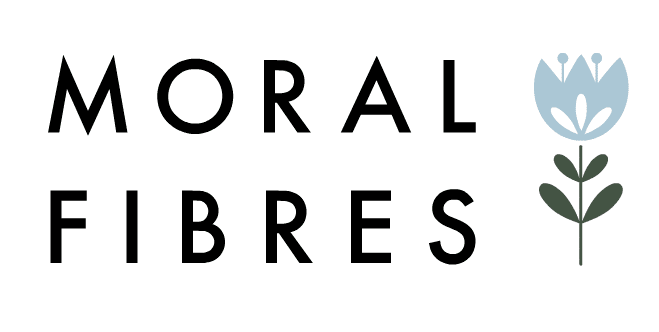

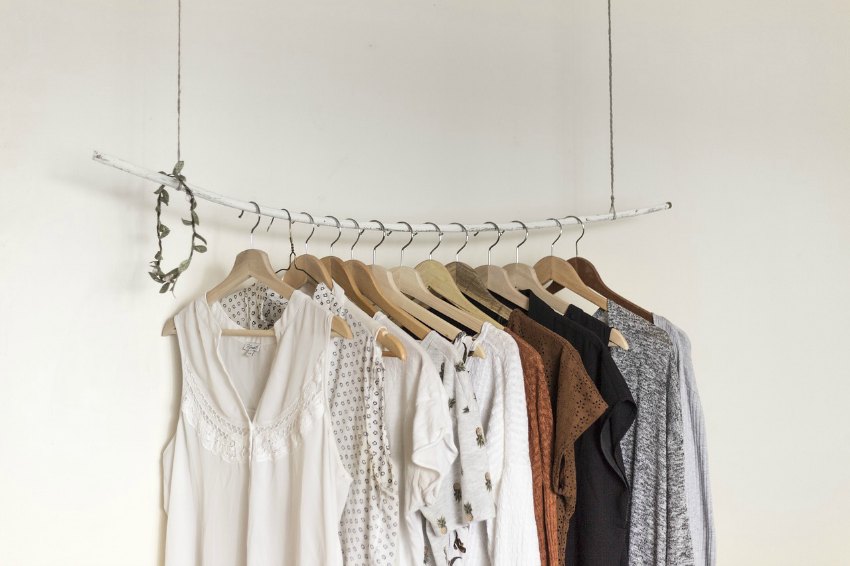
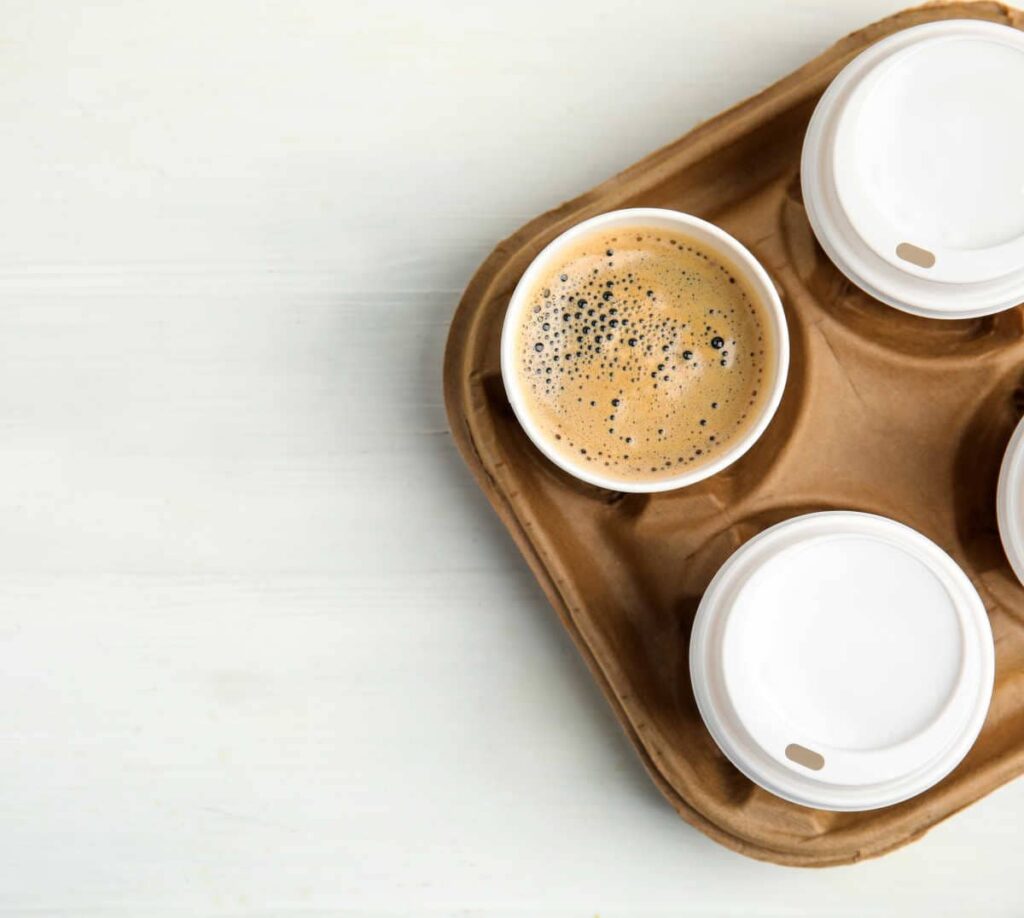
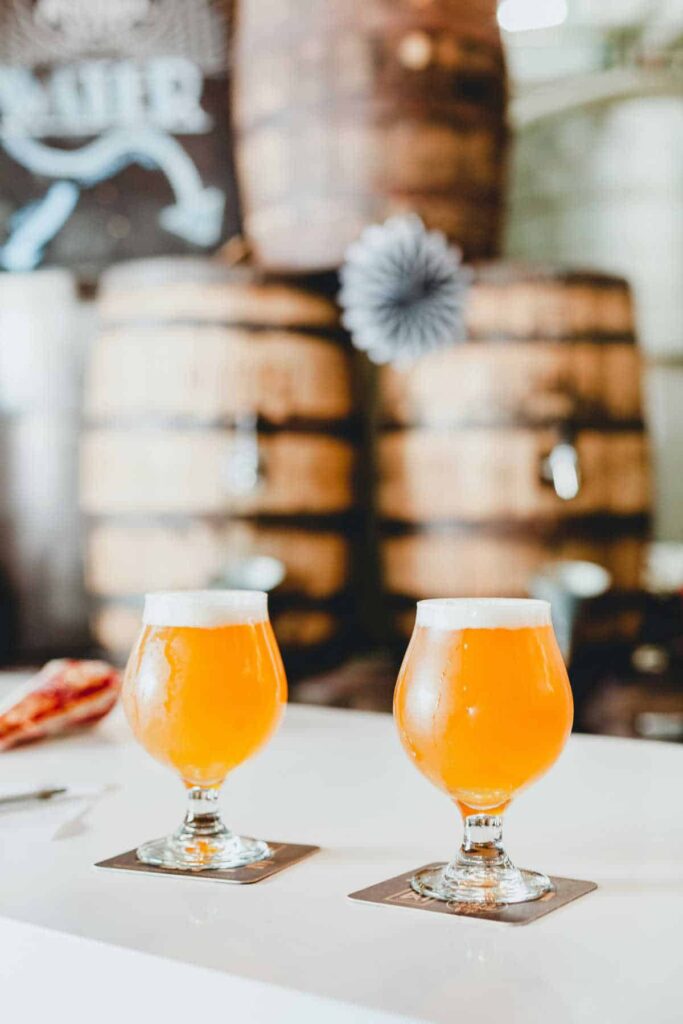
Great work !! Thank a lot Buddy!!
I like the idea of re using our large peanut butter jars to freeze food or take food to work etc, but can you put them in the microwave to re-heat or defrost the food?